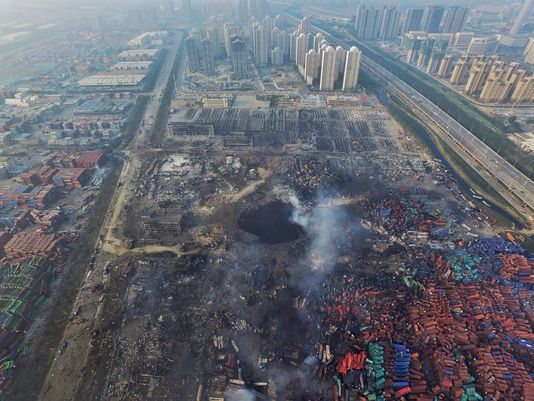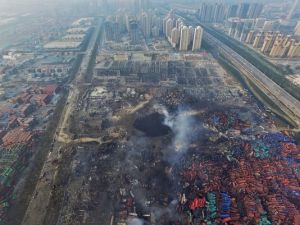This summer, places all over the world were rocked by disastrous events. China faced two, and they were not too far from one another.
In August, two deadly explosions occurred in Tianjin and the eastern province of Shandong. The explosions both occurred at chemical plants, the explosion in Shandong occurring just two weeks after the Tianjin blasts.
In Tianjin, two major explosions killed over one hundred, leaving hundreds of others injured. The blasts devastated major areas of the city. It is unclear what triggered the blasts; they occurred at a warehouse which contained flammable chemicals like calcium carbide, sodium cyanide, potassium nitrate, ammonium nitrate, and sodium nitrate. Preceding the explosions at Tianjin, firefighters sprayed water to control the fire. It is possible that this triggered the blasts, as calcium carbide, which was present at the site, reacts with water to produce highly explosive acetylene. This explosion may have lead to a chain of other blasts from other chemicals.
The first explosion had the power equivalent to three tonnes of TNT detonating, and the second blast was equivalent to 21 tonnes. It was so powerful that Earth’s satellites in orbit were able to capture the second explosion.
While the impact on the land and port were significant, reaching into residential areas, the impact on the environment and people was immense. 720 were taken to the hospital, over 60 critically injured. The final death toll has come to 173, and the search for survivors has ended. The remaining 8 missing (five of whom are firefighters) have been declared dead. China’s citizens also face potential health hazards following the Tianjin explosions, as sodium cyanide, which was present at the site, is “rapidly fatal” if inhaled or ingested. It is also water soluble, which raised concerns that it may have gone into drain water. Another potential hazard is sodium cyanide; when dissolved or burned, sodium cyanide releases hydrogen cyanide, a highly poisonous gas. A number of other chemicals pose potential health concerns as well.
The second deadly chemical blast occurred in Shandong province. The death toll is at 13. Shandong province is about 190 miles from Tianjin (300 kilometers). The Shandong explosion caused tremors up to 1 mile away from the scene, and it destroyed a factory that produced adiponitrile, a colorless liquid that produces poisonous fumes and gases when reacted with fire.
The Shandong and Tianjin explosions have raised questions about the safety standards in China, where such industrial accidents are much too common and cause disastrous destruction despite its rapid economic growth.


